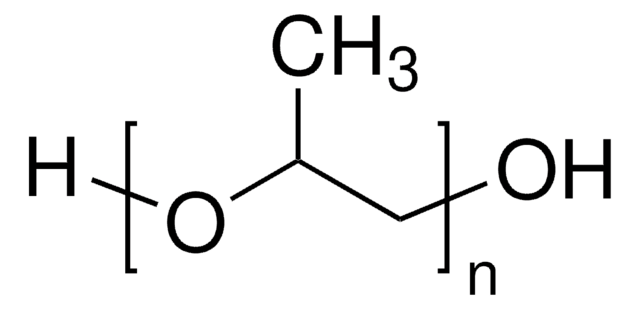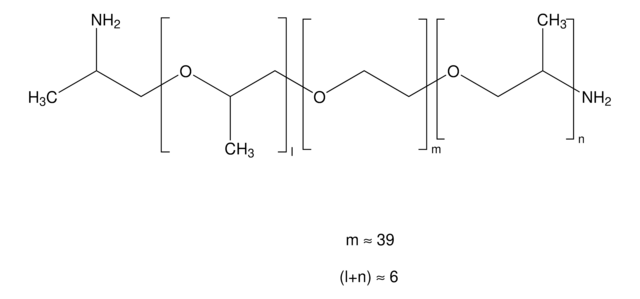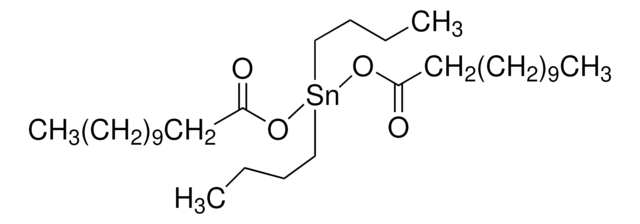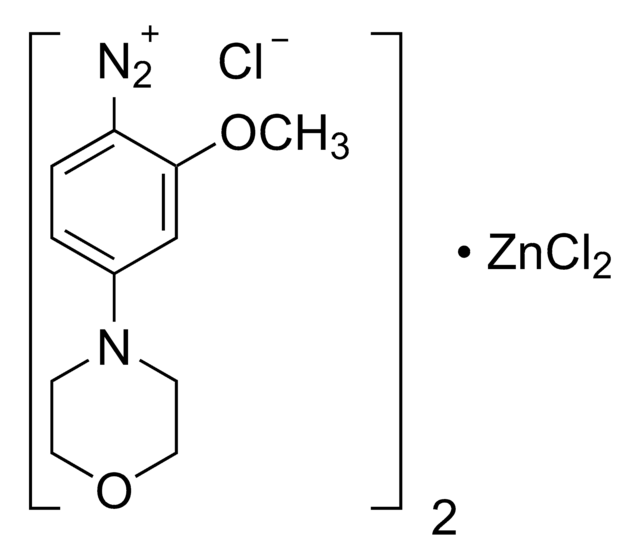202320
Poly(propylene glycol)
average Mn ~1,000
Sinónimos:
PPG, Poly(propylene oxide)
About This Item
Productos recomendados
densidad de vapor
>1 (vs air)
Nivel de calidad
presión de vapor
<0.01 mmHg ( 20 °C)
mol peso
average Mn ~1,000
contiene
130-190 ppm proprietary phenolic antioxidant
índice de refracción
n20/D 1.449
viscosidad
150 cSt(25 °C)(lit.)
valor hidroxilo
111 mg KOH/g
solubilidad
water: miscible (completely)
densidad
1.005 g/mL at 25 °C
cadena SMILES
CC(O)CO
InChI
1S/C6H14O3/c1-5(8)4-9-6(2)3-7/h5-8H,3-4H2,1-2H3
Clave InChI
DUFKCOQISQKSAV-UHFFFAOYSA-N
¿Está buscando productos similares? Visita Guía de comparación de productos
Categorías relacionadas
Descripción general
Aplicación
- As a precursor to synthesize multiblock thermo-responsive smart polymers for various biomedical applications. The presence of PPG is the main reason for the thermosensitivity of these polymers. For example, it can be used to synthesize poly(ester urethane)s.
- For the surface modification of sisal fiber to enhance nucleating ability.
Código de clase de almacenamiento
10 - Combustible liquids
Clase de riesgo para el agua (WGK)
WGK 1
Punto de inflamabilidad (°F)
445.0 °F - closed cup
Punto de inflamabilidad (°C)
229.44 °C - closed cup
Equipo de protección personal
Eyeshields, Gloves
Certificados de análisis (COA)
Busque Certificados de análisis (COA) introduciendo el número de lote del producto. Los números de lote se encuentran en la etiqueta del producto después de las palabras «Lot» o «Batch»
¿Ya tiene este producto?
Encuentre la documentación para los productos que ha comprado recientemente en la Biblioteca de documentos.
Los clientes también vieron
Nuestro equipo de científicos tiene experiencia en todas las áreas de investigación: Ciencias de la vida, Ciencia de los materiales, Síntesis química, Cromatografía, Analítica y muchas otras.
Póngase en contacto con el Servicio técnico





